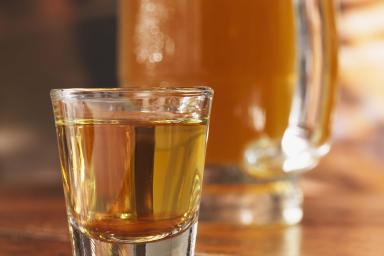Last night I found myself in defense of whiskey! A conversation arose about how much variety exists in whiskey and someone said, ”Beer is much more varied than whiskey…” I found myself arguing how that was not true, but then had a take a moment to realize that most people do not have as much experience with whiskey as they do with beer. This is due, in part, to the fact that the beer revolution has become a part of the mainstream for bar culture nowadays. Beer drinkers in metropolitan areas are much more likely to order a foreign beer or a micro-brew than the “standard domestics” like Coors or Bud. Some will even look down their noses at you if you choose to drink “corporate beer.” The same cannot necessarily be said for whiskey drinkers (except for the occasional looking down their noses at someone drinking in a way they don’t approve of). Whiskey drinkers are not presented with the same variety of choices as beer drinkers. At least not yet.
I live in the Philadelphia area and the City of Brotherly Love is often called the best beer drinking city in the country. I am inclined to agree with that statement, even if I may be a bit biased. The first Belgian beer on draft in the U.S. was poured from a Philadelphia tap. Since the late 90’s, the number of pubs or bars with more than 50 beers available on their menus are too many to mention here in order to make the point. Philly Beer Week is a huge event that is about to inundate the city with beer enthusiasts from far and wide and beer from across the globe (not to mention local brews!). This intense love for beer has grown over the last two decades and that amount of time has fostered beer geeks and aficionados a-plenty. Cut to 2011, when Pennsylvania freed up laws that opened the doors for distillers to get in on the action. “Whiskey is what beer wants to be when it grows up” is a quote I often use. These beer lovers from the 90’s and early aughts are in their thirties and forties now and whiskey is coming into their sites. The bourbon boom is upon us. The number of whiskey lovers is growing and the fire that beer lit beneath them for variety will be reflected in their choices at the bar. Demand for variety creates more (and better) selection.
I have no doubt that the entrepreneurs that are warming up their new stills will be mixing it up in the years to come. It has already begun. What does sorghum whiskey taste like? How about a rice flavored bourbon? (Jim Beam’s Brown Rice Bourbon is quite good, btw!) Perhaps a cherry wood smoked malt whiskey or a blue corn bourbon? Maybe a six grain whiskey? There is no end to the variety that whiskey could present to the drinking public. Just think- Scotland makes all their single malts with malted barley. One grain creates all that variety. Anyone very familiar with bourbon will tell you that no two are alike even if they are essentially the same basic recipe of mostly corn, rye or wheat and barley. You don’t have to take my word for it, though. Whiskey distillers have to make beer first before they can distill it. So in a simple sense, any beer can be distilled into whiskey. There’s variety for ya! We all know the difference between a double IPA and a smoked stout these days, but would you know the difference between a 10 year old Islay single malt and a 12 year old bourbon? How about a sherry finished rye and a straight hop flavored whiskey? Yes. Yes, you would.
The flood gates that were sealed shut due to Prohibition in the United States may very well open again. It’s been 100 years since rye whiskey, a style of whiskey so ubiquitous early in our nation’s history, has been enjoyed and purchased by so many people. Imagine what our nation’s whiskey landscape would look like now if it weren’t for the Great Experiment? It only took 20 years or so to put a variety of at least 20 beers on tap at your local pub…let’s see what a few years can do for American whiskey!

